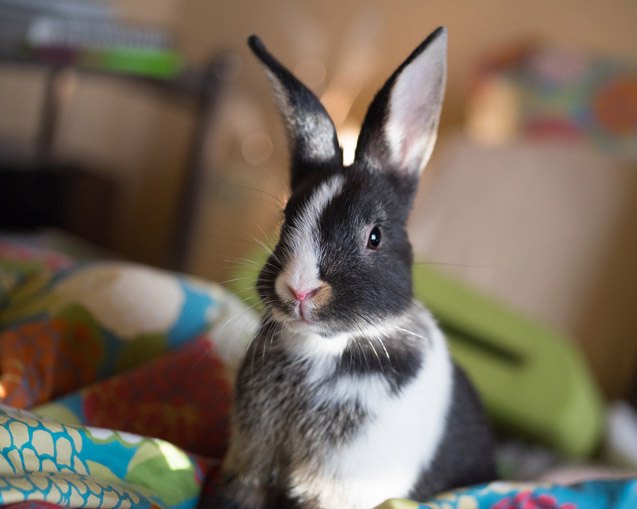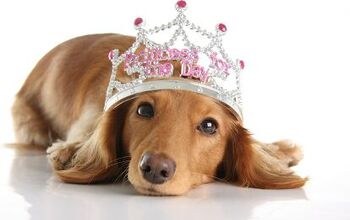Britannia Petite Rabbit


About Britannia Petite Rabbit
The Britannia Petite rabbit evolved from the Polish rabbit in England in the early 1800s, when showing rabbits for show purposes was popular. This Polish rabbit was exported into the United States in the 1900s, where it remained the same breed (dubbed Polish).
In England, breeders started teaching their Polish rabbits the proper way to pose (sitting up on their forefeet, for example), and selective breeding created a rabbit with upright stances and refined bone structure, like we see in the Britannia Petite rabbit today. The breed that Americans call the Britannia Petite is still known as the Polish Rabbit by British Council standards. When these newly developed rabbits with natural poses came to the United States, the name was changed, as the American Rabbit Breeder’s Association already recognized a breed deemed “Polish.”.
Many owners enter their Britannia Petite Rabbit into competitive shows where it jumps over obstacles.
The Britannia Petite rabbit has a full-arch body type, which means the arch starts at the base of its short neck and continue to the base of the tail. When viewed from the side, it should be a quarter circle,with the rabbit’s belly tucked up beneath it. They have a wedge-shaped head with large eyes that almost look like they are protruding out of their heads. The Britannia Petite rabbit also has short, pointed ears that stand vertically on its head.
Not unlike other rabbit breeds, the Britannia Petite’s short, soft coat does not need much care in order to keep it in good condition. They will shed a little bit more than usual twice a year, and if you’re keeping this rabbit as a pet, you will notice an increased amount of stray hairs in your clothes and around your home. To avoid this, simply brush your rabbit outdoors 1-2 times per week with a slicker brush during heavy shedding periods – otherwise, grooming them once every two weeks should be sufficient.
The REW (red-eyed-white) Britannia Petite was the first color to be accepted by the ARBA in 1977, however colors that were also added were developed by judge Rene Godderz. This includes blue-eyed whites and rabbits with broken patterns (white mixed with any other color). However, this breed comes in a variety of other shades such as black, chestnut agouti, black otter and sable.
The Britannia Petite rabbit is energetic, so time out of its enclosure is beneficial.
A proper diet is one of the most important facets of rabbit ownership. Two things should be given in unlimited amounts to ensure your rabbit is well fed and their health is maintained: fresh water and good-quality hay. Pellets, fresh fruits/vegetables, and leafy greens should only be 25 percent or less of their diet (or even merely given as occasional treats). Some rabbit-safe vegetables include carrots, fennel, broccoli, and cucumbers and as for fruits, try to only serve your rabbit fruits that are low in sugar (such as apples).
Because Britannia Petite Rabbits are so small, they do not require a large enclosure. However, they are much more energetic than other dwarf breeds (such as the Netherland Dwarf) and because of that, you may want to purchase an indoor enclosure that is suitable for a medium-sized rabbit so they have plenty of room to run around. Because of its small size, they are not recommended for outdoor enclosures, as they are easy targets for predators (no matter how strong/durable their enclosures seem to be). Indoor enclosures should be made of wire and have a solid bottom where bedding can be placed. Bedding needs to be spot-cleaned every day and completely replaced at the end of every week.
This little rabbit has a lot of energy to burn and because of that, owners need to make sure they have enough time to take them out of their cages every day. While they are not the most affectionate rabbit breed, they are energetic and won’t stop often for cuddles.
The Britannia Petite does not have any health issues particular to its breed, but rabbit owners should check their pets for common problems such as overgrown teeth. Overgrown teeth occur when the rabbit has a poor diet that does not contain enough hay, which slowly grinds their teeth down naturally. If your rabbit suffers from a loss of appetite, has fewer droppings or just doesn’t seem to be itself, be sure to check their mouth for signs of overgrown teeth, which can grow into their jaw or face and be extremely painful.
A proper diet is also important to ensure other digestive problems do not occur. For example, if your rabbit develops diarrhea because of a poor diet, their soiled coat can attract flies in the warmer months (especially if it is outdoors). If the rabbit is unable to groom himself properly, flies can lay eggs in his fur (near the bottom). When those eggs hatch, they eat your rabbit – this is called flystrike. To avoid this, make sure your rabbit eats a balanced diet and check fur for flies.
A pea-sized dose of deworming paste twice a year is also recommended to keep your rabbit healthy, and owners should check their rabbit’s ears periodically for ear mites.
Because Britannia Petite Rabbits are small, they do not require a large enclosure.
Unlike the Netherland Dwarf, the Britannia Petite is not shy or skittish, but they are energetic, which won’t be appealing to those who would like a sweet rabbit to cuddle up to. This rabbit isn’t for first-time owners or seniors, but they would make fantastic pets for those who understand this breed’s nature. Their small size makes them good pets for both homes as well as apartments, so long as the “bunny room” is large enough for your rabbit to safely hop about (rabbit-proofing your entire apartment is easier said than done).
Rabbits are notoriously difficult to train, but it is not impossible. Many owners enter their Britannia Petites into competitive shows where they are trained to jump over obstacles. There are plenty of rabbits (Britannia Petites not exclusive) that are taught how to stay, sit and even potty train in their home. With plenty of time, patience and rewards, your rabbit can learn all of these tricks.
The Britannia Petite Rabbit needs plenty of outdoor time to bond with its human family. Some enjoy simple toys such as a ball or empty paper towel roll, while others seem to enjoy more complex toys such as those purchased at your local pet store.
Photo credit: David/Flickr; The Happy Aspie/Flickr; naruden/Bigstock

More by Diana Faria

























